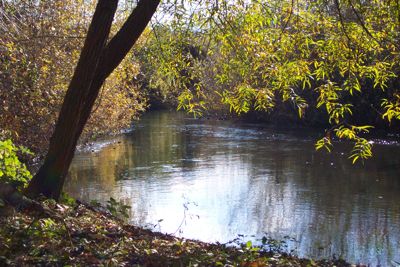Fiction: The Potter Valley Project has had a negative impact on the Russian River and the SCWA wants to shut it down.
The Sonoma County Water Agency (SCWA) has never advocated shutting down the Potter Valley Project. In fact, not long ago, the SCWA had a standing letter with PG&E offering to purchase the Potter Valley Project to protect the water supply.
 SCWA was the major funding source for the Biological Assessment that was produced when the ACOE, NMFS, RRFC and SCWA entered into a Section 7 Consultation under the Endangered Species Act, to review the impacts of Coyote Valley Dam and Warm Springs Dam. The existence of the Potter Valley Project formed part of the basis for the conclusions drawn by NMFS in their Final Biological Opinion. For the Russian River fishery, the water stored in Lake Mendocino is critical for augmenting fall migration runs. Because of the conclusions in the NMFS Final Biological Opinion, D1610, a State Water Resources Control Board decision that specifies the flows in the Russian River will be modified. The modification will take into account the flows through the Potter Valley Project which are now critical to maintain storage in Lake Mendocino for the fall. SCWA recently filed a Notice of Preparation for the Environmental Impact Report for the proposed Fish Habitat Flows and Water Rights Project which is necessary prior to a modification of the Russian River flows.
SCWA was the major funding source for the Biological Assessment that was produced when the ACOE, NMFS, RRFC and SCWA entered into a Section 7 Consultation under the Endangered Species Act, to review the impacts of Coyote Valley Dam and Warm Springs Dam. The existence of the Potter Valley Project formed part of the basis for the conclusions drawn by NMFS in their Final Biological Opinion. For the Russian River fishery, the water stored in Lake Mendocino is critical for augmenting fall migration runs. Because of the conclusions in the NMFS Final Biological Opinion, D1610, a State Water Resources Control Board decision that specifies the flows in the Russian River will be modified. The modification will take into account the flows through the Potter Valley Project which are now critical to maintain storage in Lake Mendocino for the fall. SCWA recently filed a Notice of Preparation for the Environmental Impact Report for the proposed Fish Habitat Flows and Water Rights Project which is necessary prior to a modification of the Russian River flows.
 Both the Mainstem Eel River above the confluence with Outlet Creek, and the Russian River, are now to a great degree, manmade systems. Scott, Coyote and Warm Springs dams exist, but a great effort is being made to mimic natural flows in the upper Eel River, Russian River and Dry Creek. The existence of the Potter Valley Project is now an important part of the attempt to enhance fish migration and protect habitat in the Russian River system. This does not mean that the Eel River has been ignored. On the contrary, as we have outlined in detail above, extreme efforts have been made to make sure that the Potter Valley Project has as minimal effect as possible on the Mainstem Eel River.
Both the Mainstem Eel River above the confluence with Outlet Creek, and the Russian River, are now to a great degree, manmade systems. Scott, Coyote and Warm Springs dams exist, but a great effort is being made to mimic natural flows in the upper Eel River, Russian River and Dry Creek. The existence of the Potter Valley Project is now an important part of the attempt to enhance fish migration and protect habitat in the Russian River system. This does not mean that the Eel River has been ignored. On the contrary, as we have outlined in detail above, extreme efforts have been made to make sure that the Potter Valley Project has as minimal effect as possible on the Mainstem Eel River.
It may be useful to describe a few of the physical differences in the Eel and Russian Rivers systems. The Eel River watershed is much larger than the Russian River watershed. The Russian River watershed is 1,485 square miles. The Eel River watershed is approximately 3,971 square miles. The USGS gage at Scotia near the mouth of the Eel River measures on average 5,000,000 acre feet per year. Average flows measured at the USGS gage at Guerneville, near the mouth of the Russian River, are 1,601,000 acre feet per year. These are very different watersheds. The Russian River has little snow compared to the Eel River and tends to have less rainfall per square mile than the Eel River system. It is interesting to compare flows on the exact same day in time - and what better date than the highest local flood of human written record? On December 23, 1964, the maximum flow at the Scotia USGS gage, on the Eel River, was 750,000 cfs. On the same date the maximum flow at USGS Guerneville gage was 93,400 cfs.
 SCWA was the major funding source for the Biological Assessment that was produced when the ACOE, NMFS, RRFC and SCWA entered into a Section 7 Consultation under the Endangered Species Act, to review the impacts of Coyote Valley Dam and Warm Springs Dam. The existence of the Potter Valley Project formed part of the basis for the conclusions drawn by NMFS in their Final Biological Opinion. For the Russian River fishery, the water stored in Lake Mendocino is critical for augmenting fall migration runs. Because of the conclusions in the NMFS Final Biological Opinion, D1610, a State Water Resources Control Board decision that specifies the flows in the Russian River will be modified. The modification will take into account the flows through the Potter Valley Project which are now critical to maintain storage in Lake Mendocino for the fall. SCWA recently filed a Notice of Preparation for the Environmental Impact Report for the proposed Fish Habitat Flows and Water Rights Project which is necessary prior to a modification of the Russian River flows.
SCWA was the major funding source for the Biological Assessment that was produced when the ACOE, NMFS, RRFC and SCWA entered into a Section 7 Consultation under the Endangered Species Act, to review the impacts of Coyote Valley Dam and Warm Springs Dam. The existence of the Potter Valley Project formed part of the basis for the conclusions drawn by NMFS in their Final Biological Opinion. For the Russian River fishery, the water stored in Lake Mendocino is critical for augmenting fall migration runs. Because of the conclusions in the NMFS Final Biological Opinion, D1610, a State Water Resources Control Board decision that specifies the flows in the Russian River will be modified. The modification will take into account the flows through the Potter Valley Project which are now critical to maintain storage in Lake Mendocino for the fall. SCWA recently filed a Notice of Preparation for the Environmental Impact Report for the proposed Fish Habitat Flows and Water Rights Project which is necessary prior to a modification of the Russian River flows.
 Both the Mainstem Eel River above the confluence with Outlet Creek, and the Russian River, are now to a great degree, manmade systems. Scott, Coyote and Warm Springs dams exist, but a great effort is being made to mimic natural flows in the upper Eel River, Russian River and Dry Creek. The existence of the Potter Valley Project is now an important part of the attempt to enhance fish migration and protect habitat in the Russian River system. This does not mean that the Eel River has been ignored. On the contrary, as we have outlined in detail above, extreme efforts have been made to make sure that the Potter Valley Project has as minimal effect as possible on the Mainstem Eel River.
Both the Mainstem Eel River above the confluence with Outlet Creek, and the Russian River, are now to a great degree, manmade systems. Scott, Coyote and Warm Springs dams exist, but a great effort is being made to mimic natural flows in the upper Eel River, Russian River and Dry Creek. The existence of the Potter Valley Project is now an important part of the attempt to enhance fish migration and protect habitat in the Russian River system. This does not mean that the Eel River has been ignored. On the contrary, as we have outlined in detail above, extreme efforts have been made to make sure that the Potter Valley Project has as minimal effect as possible on the Mainstem Eel River.